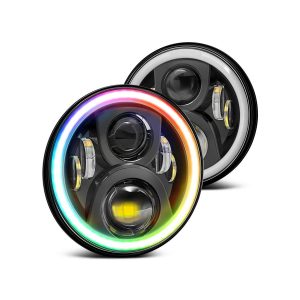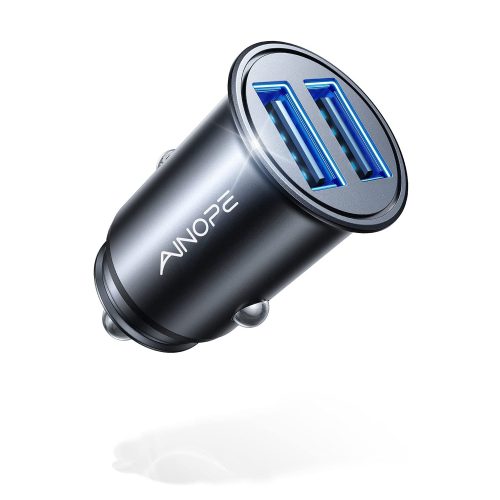Wireless Charger: The Future of Convenient Charging
Wireless chargers have revolutionized the way we charge our electronic devices by eliminating the need for traditional cables. With the rise of smartphones, smartwatches, and other portable gadgets, wireless charging has become increasingly popular for its convenience and ease of use. By simply placing a device on a charging pad or stand, users can quickly replenish their device’s battery without the hassle of cords or plugs. This technology is based on inductive charging, where power is transferred wirelessly between two coils through an electromagnetic field.
Wireless chargers come in different designs, power outputs, and capabilities, and they are widely compatible with devices that support the Qi standard, the universal standard for wireless charging. In this guide, we will explore the features, benefits, types, and specifications of wireless chargers in detail.
How Wireless Charging Works
Wireless charging is based on the principle of electromagnetic induction. A wireless charger consists of a charging pad or stand that has a built-in transmitter coil, which generates an electromagnetic field. When a compatible device, such as a smartphone or smartwatch, is placed on the pad, it receives the electromagnetic energy via a receiver coil built into the device. This energy is then converted into electrical current, which charges the device’s battery.
The most common wireless charging standard used today is Qi (pronounced “chee”), developed by the Wireless Power Consortium (WPC). This standard ensures that wireless chargers and devices from different manufacturers are compatible with each other.
Types of Wireless Chargers
There are several types of wireless chargers designed for different purposes and device compatibility:
- Charging Pads:
- Flat, disc-like pads where devices are placed flat for charging. They are sleek, compact, and perfect for home or office use.
- Most common type of wireless charger and works well for smartphones and other devices like wireless earbuds.
- Charging Stands:
- Vertical or angled stands where devices can be placed upright while charging. These stands allow users to easily view notifications or use their devices while charging.
- Ideal for use on desks or nightstands, and many come with fast-charging capabilities.
- Multi-Device Chargers:
- Designed to charge multiple devices at the same time, such as a smartphone, smartwatch, and wireless earbuds. These chargers often feature multiple coils and larger charging surfaces.
- Perfect for users with multiple gadgets who want a clutter-free charging solution.
- Car Wireless Chargers:
- Wireless charging mounts designed for cars, usually attaching to air vents or dashboards. These chargers securely hold your phone in place while driving and wirelessly charge it at the same time.
- Great for hands-free navigation and keeping your phone charged on long drives.
- Magnetic Wireless Chargers:
- These chargers use magnets to align the phone perfectly with the charging coils for optimal charging efficiency.
- Popular for devices like the iPhone with MagSafe technology, where magnets ensure precise positioning.
Key Features of Wireless Chargers
Wireless chargers come with a variety of features that improve usability, efficiency, and convenience. Below are some common features:
- Qi Compatibility:
- The Qi standard ensures that a wide range of devices from different manufacturers can use the same wireless charger. Devices from Apple, Samsung, Google, and other brands that support wireless charging typically follow this standard.
- Fast Charging:
- Many wireless chargers support fast charging with higher wattage outputs, such as 7.5W, 10W, 15W, and even 20W for compatible devices. This allows for faster battery replenishment compared to standard wireless charging speeds.
- Fast charging is often optimized for specific brands like Apple or Samsung, depending on the charger.
- Multiple Coil Design:
- Some wireless chargers feature multiple charging coils, providing a larger surface area for charging. This reduces the need for precise placement and ensures more reliable charging even if the device isn’t perfectly aligned.
- Overheat and Overcharge Protection:
- Wireless chargers are equipped with safety features such as temperature control, overcharge protection, and short-circuit prevention. These features ensure that your device doesn’t overheat or get damaged during charging.
- LED Indicators:
- Many chargers come with LED lights that indicate charging status. These lights typically turn on or change color to show whether the device is charging, fully charged, or not properly aligned.
- Non-Slip Surface:
- The top of most wireless chargers is made of non-slip material (like rubber) to keep devices securely in place while charging. This feature prevents devices from sliding off the charging pad.
- Portable and Compact Design:
- Wireless chargers are designed to be lightweight and portable, making them easy to carry in bags for on-the-go use. Compact chargers are great for travel, while larger multi-device pads may be better suited for home use.
- Magnetic Alignment (MagSafe):
- Chargers designed for the MagSafe system (used by recent iPhone models) feature magnetic alignment for precise and efficient charging. This feature ensures the phone stays in place and charges at optimal speed.
Advantages of Wireless Charging
- Convenience: No need to plug in and unplug cables every time you want to charge your device. Simply place it on the charging pad, and the device starts charging.
- Reduced Wear on Charging Ports: Frequent use of charging cables can wear out a device’s charging port over time. Wireless charging eliminates this issue by allowing charging without any physical connection.
- Multiple Device Charging: Multi-device wireless chargers allow you to charge several gadgets simultaneously, reducing clutter and cable management.
- Versatile Placement: Wireless charging pads and stands can be placed anywhere, from nightstands to desks, making them highly versatile.
Specifications and Features Table
| Specification | Details |
|---|---|
| Charging Standard | Qi (universal standard for wireless charging) |
| Power Output | Standard 5W, Fast Charging at 7.5W, 10W, 15W, 20W (depending on the charger and device compatibility) |
| Type | Charging Pad, Charging Stand, Multi-Device Charger, Car Charger, Magnetic Charger (MagSafe) |
| Device Compatibility | Qi-enabled devices (smartphones, smartwatches, wireless earbuds, etc.) |
| Power Source | USB-A/USB-C or power adapter (most chargers connect via a USB cable to a power source) |
| Fast Charging Support | Yes (varies by device and brand) |
| Magnetic Alignment | Available on MagSafe-compatible models |
| Coil Design | Single or multiple coils (for larger charging surfaces) |
| Safety Features | Overheat protection, Overcharge protection, Short-circuit prevention |
| LED Indicators | Yes (indicates charging status and alignment) |
| Portability | Lightweight and compact designs available for travel-friendly use |
| Materials | Plastic, Aluminum, Rubber (for non-slip surfaces) |
| Colors | Available in multiple colors and finishes (Black, White, Silver, etc.) |
| Warranty | 1-2 years depending on the brand |
Detailed Features of Wireless Chargers
1. Qi Wireless Charging Standard
- The Qi standard is the universal technology used in most wireless chargers today. This ensures compatibility with a broad range of devices, including iPhones, Samsung Galaxy smartphones, Google Pixel devices, and other gadgets like wireless earbuds and smartwatches.
- Devices that support Qi can be charged wirelessly by simply placing them on a Qi-enabled charging pad or stand.
2. Fast Charging Capability
- While standard wireless charging offers 5W of power, many chargers now support fast charging options. Devices such as the iPhone can charge at 7.5W, while Samsung phones may support 10W or 15W charging. Some advanced chargers can deliver up to 20W for ultra-fast charging on newer devices.
- To achieve fast charging, the device and charger must both support this feature, and the charger must be connected to a suitable power adapter.
3. Multi-Device Charging
- Multi-device wireless chargers are perfect for users who have multiple gadgets. These chargers often feature multiple coils to allow simultaneous charging of two or three devices, such as a smartphone, smartwatch, and wireless earbuds. This reduces clutter by eliminating the need for multiple chargers and cables.
4. Magnetic Alignment and MagSafe Technology
- Wireless chargers with magnetic alignment ensure that devices align perfectly with the charging coils, optimizing charging efficiency. Apple’s MagSafe system uses magnets to automatically align compatible iPhones for fast and secure wireless charging.
- This feature is especially useful for ensuring consistent and reliable charging without needing to worry about placement.
5. Safety Features
- Modern wireless chargers come with various safety features, such as overcharge protection, temperature control, and short-circuit prevention. These features protect both the charger and the device from overheating, overloading, or malfunctioning during charging.
6. LED Indicators
- Wireless chargers often have LED indicators that show the charging status. For instance, the light might turn on or change color to indicate whether the device is charging, fully charged, or misaligned on the pad.
7. Portable and Travel-Friendly Designs
- Many wireless chargers are designed to be compact and portable, making them ideal for travel. Some models can easily fit.
Best Wireless Charger Retailer in Okhla, Delhi
Wireless Charger Retailer in Delhi

















